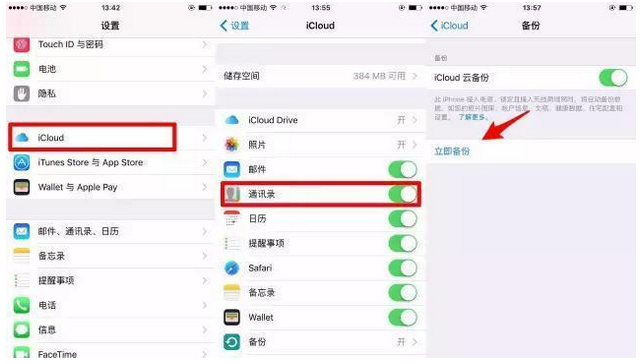
How to import contacts from Apple to another phone? This is a problem that many iPhone users often encounter. Fortunately, PHP editor Baicao brings you the latest method of transferring iPhone contacts. In this article, we will introduce in detail how to import the address book through different methods such as iCloud, iTunes and third-party tools to help you easily complete the migration of contact data between mobile phones. Whether it's getting a new phone or backing up data, these methods will provide you with convenient solutions. Let’s take a look!
1. iCloud transfer


If you are an iPhone user before, then this method is the easiest.
The specific operation method is to open Settings - iCloud - Contact Book Backup - Turn on the backup function - Select Backup Now on your old phone.
After that, log in to your new phone with the Apple ID you just created, and choose to sync your address book in iCloud.
2. SIM card import


If you don’t have an iPhone before, or don’t want to use iCloud transfer. You can choose to copy the contacts on the old phone to the SIM card, then insert the new SIM card into the iPhone and import the contacts from the SIM card to the new phone.
How to operate: Open Settings - Enter Mail, Address Book, Calendar - Scroll down and click to import SIM card address book.
3. Use WeChat to import


If your old phone is Android, then transfer the address book between different systems It's more troublesome. However, WeChat, a thoughtful app, provides a backup function. You can use WeChat backup to back up the address book of your old phone to the WeChat cloud, and then transfer it to the new phone.
Operation method: "Settings - General - Functions - Address Book Security Assistant - Enter Security Assistant", back up the address book and wait for the backup to complete. Then find a new phone, log in to the same WeChat, and import the address book.
The above is the detailed content of How to import contacts from Apple to another phone 'The latest method to transfer iPhone contacts'. For more information, please follow other related articles on the PHP Chinese website!
 What does Apple LTE network mean?
What does Apple LTE network mean? The role of Apple's Do Not Disturb mode
The role of Apple's Do Not Disturb mode How to solve the problem that Apple cannot download more than 200 files
How to solve the problem that Apple cannot download more than 200 files How to refund Douyin recharged Doucoin
How to refund Douyin recharged Doucoin Word document encryption tutorial
Word document encryption tutorial The difference between div and span
The difference between div and span Introduction to Document in JS
Introduction to Document in JS How to delete WeChat emoticons
How to delete WeChat emoticons



